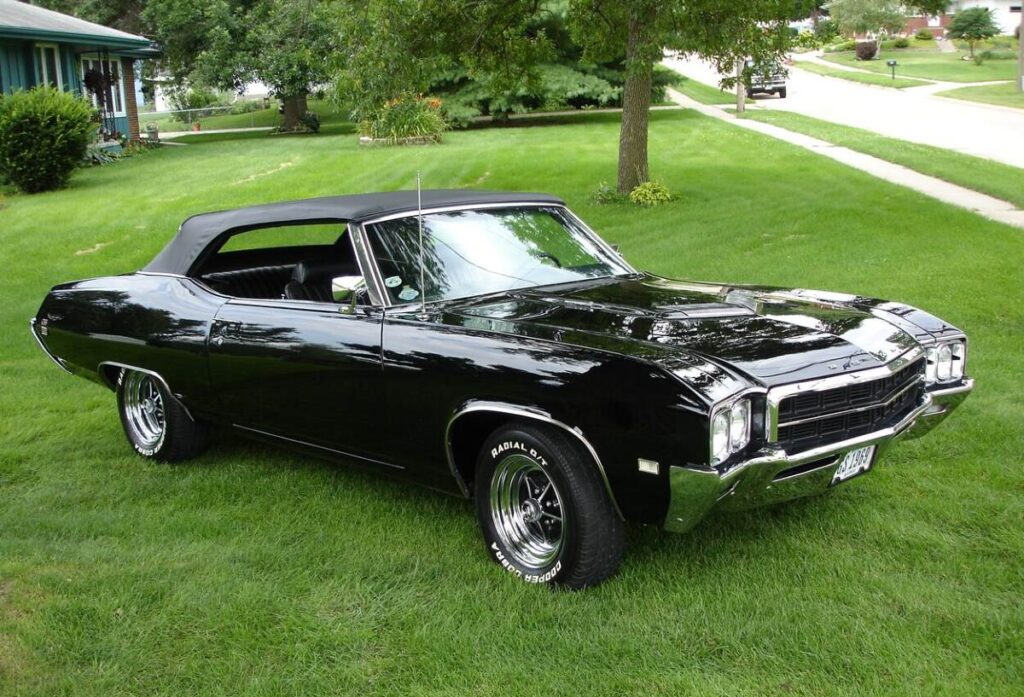The 1969 Buick GS 400 Stage 1 is a legendary American muscle car that holds a special place in automotive history. Produced by Buick, a renowned American automobile manufacturer, the GS 400 Stage 1 represented the pinnacle of Buick’s performance offerings during the late 1960s.
1969 Buick GS 400’s Approach to High Performance
Buick faced the challenge of capturing the attention of the youth market without alienating its mature buyers. In the mid-60s, Buick introduced the Grand Sport (GS) line, which was derived from the mid-sized Abady platform based on the Skylark or Special models. The GS featured upgraded suspension, more powerful engines such as the 401 Nailhead V8, and improved brakes. While other automakers embraced flashy designs, Buick opted for a more subtle approach to high-performance vehicles.
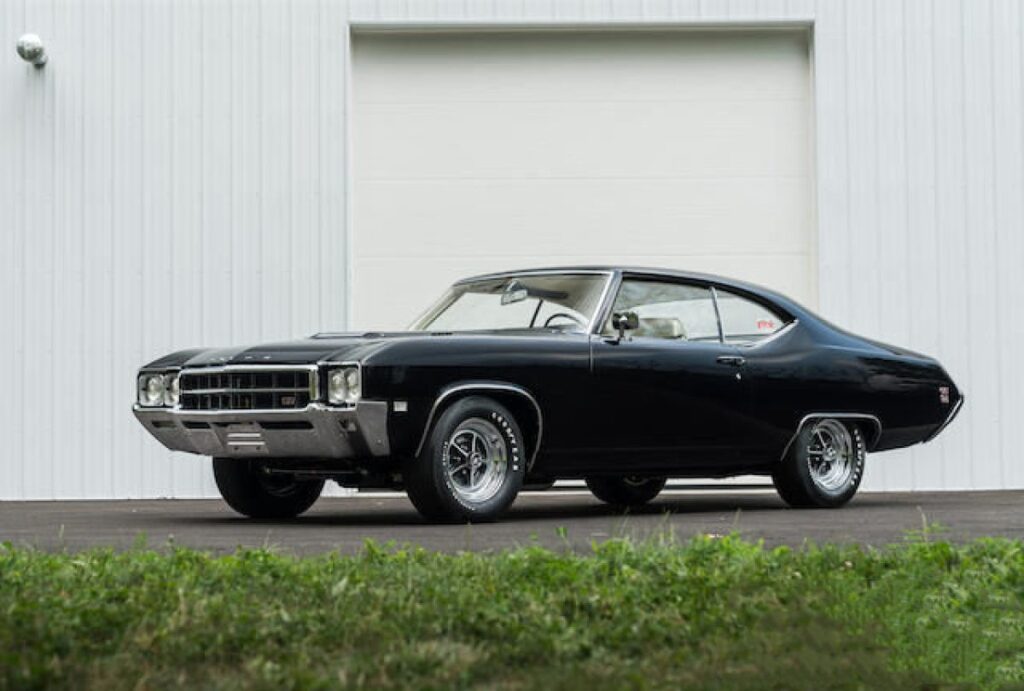
By the late 1960s, muscle cars from Ford, Plymouth, Dodge, Pontiac, and Chevrolet dominated the market with their fast and aggressive looks. Buick engineers faced a unique challenge: how to attract performance-seeking customers while catering to their existing customer base of luxury car buyers. Buick’s typical clientele consisted of individuals who preferred high-end Electra’s, Riviera’s, and other luxury models, and the engineers didn’t believe that these customers would be drawn to cars with bold colors, vibrant stripes, wings, and spoilers.
To address this dilemma, Buick took a different route. They shortened the Grand Sport name to simply “GS” and introduced the Buick GS 400 in 1967. This model featured a refined Buick 400 engine with a 10.25:1 compression ratio, delivering a solid 350 horsepower at 4800 RPM and an impressive 440 foot-pounds of torque. However, it was the Stage 1 option that truly elevated the performance of the GS 400.
Opting for the Stage 1 package provided discerning buyers with larger valves on the cylinder heads, as well as a more radical camshaft with higher lift and longer duration. Despite the increased performance, Buick maintained a smooth and refined driving experience by utilizing hydraulic valve lifters. The Stage 1 engine breathed through a special Rochester Quadrajet four-barrel carburetor with larger jets and a different secondary metering rod cam, complemented by a dual exhaust system for optimal flow.
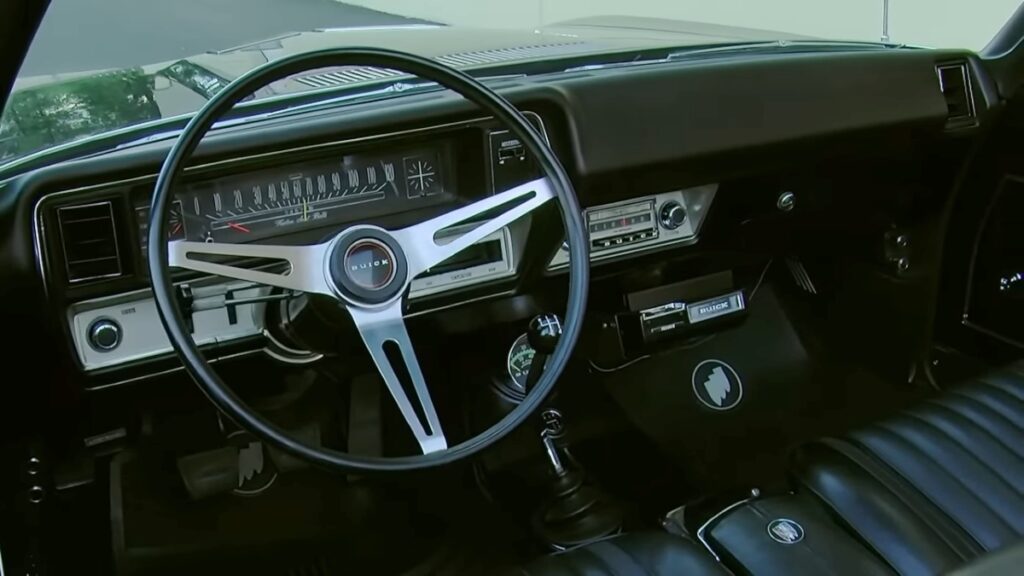
The design of the engine block itself was innovative. As the displacement of these engines grew, so did their weight. To address this, Buick employed a thin wall casting technique to increase cubic inch displacement while reducing overall weight. In 1969, the GS 400 still adhered to the 400 cubic inch limit imposed by GM, which was later raised in 1970, leading to the Buick 400 growing to a 455 cubic inch engine.
The Buick GS 400 Stage 1, especially in convertible form, was a rare gem. It boasted a combination of features and performance that made it highly coveted among car enthusiasts. Its allure was further enhanced by its stunning triple-black color scheme—black top, black interior, and black paint—an aggressive and formidable appearance rarely seen from Buick until the release of the Grand National in the mid-80s.
While the name “Stage 1” might not sound particularly intimidating or fast by today’s standards, it carried significant meaning back in 1969. During that time, the space race was in full swing, and the ultimate symbol of power and speed was the Saturn V rocket. The Saturn V utilized multiple stages of rockets for its propulsion, with the most potent and influential stage being “Stage 1.” Buick cleverly associated the name with the raw power and performance of their GS 400 Stage 1, drawing a parallel between the impressive acceleration of the car and the awe-inspiring launch of the Saturn V rocket.
The Buick GS 400 Stage 1 Engine
The heart of the 1969 Buick GS 400 Stage 1 was its engine. The Buick 400 engine was first introduced in 1967 and underwent refinements over the years. By 1969, the Stage 1 option was available, boasting higher compression, increased horsepower, and torque.
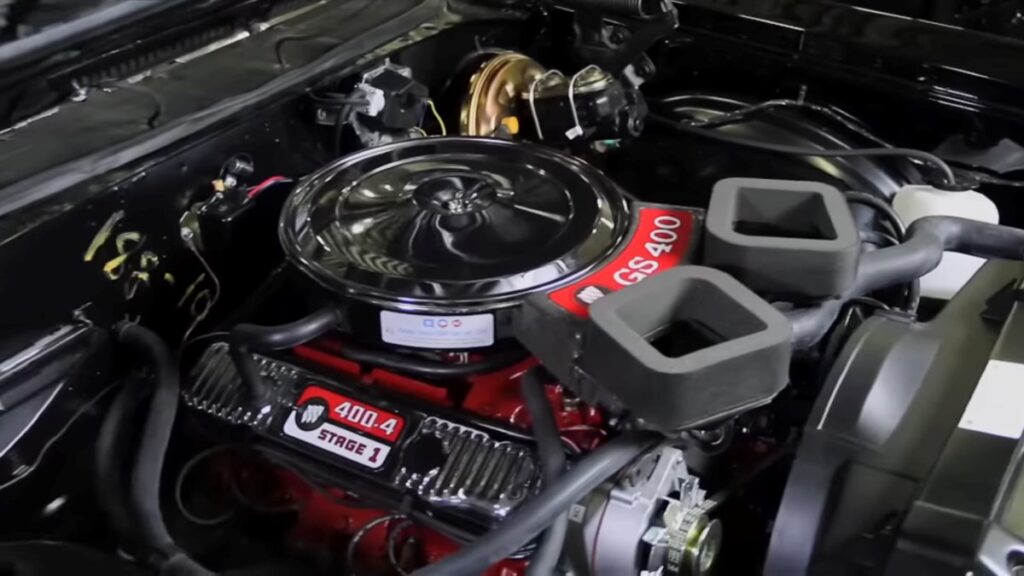
The Stage 1 package included larger diameter valves on the cylinder heads, a more aggressive camshaft, and a specially tuned Rochester Quadrajet four-barrel carburetor with improved airflow. With a compression ratio of 10.25:1, the Stage 1 engine produced an impressive 350 horsepower at 4800 RPM and 440 foot-pounds of torque. Buick engineers opted for hydraulic valve lifters to maintain smooth operation and paired the engine with a dual exhaust system.
The engine block of the Buick GS 400 Stage 1 was designed with a thin wall casting, aiming to increase cubic inch displacement while reducing weight. In 1969, the engine remained at a displacement of 400 cubic inches, as all General Motors cars were limited to that size. However, in 1970, Buick increased the displacement to 455 cubic inches.
Unique Features and Design
The Buick GS 400 Stage 1 stood out with its distinctive design elements and rarity. While other manufacturers embraced bold colors, wild stripes, and eye-catching spoilers, Buick took a more refined approach. The GS 400 Stage 1 exuded aggression and performance without compromising its sophisticated appeal.
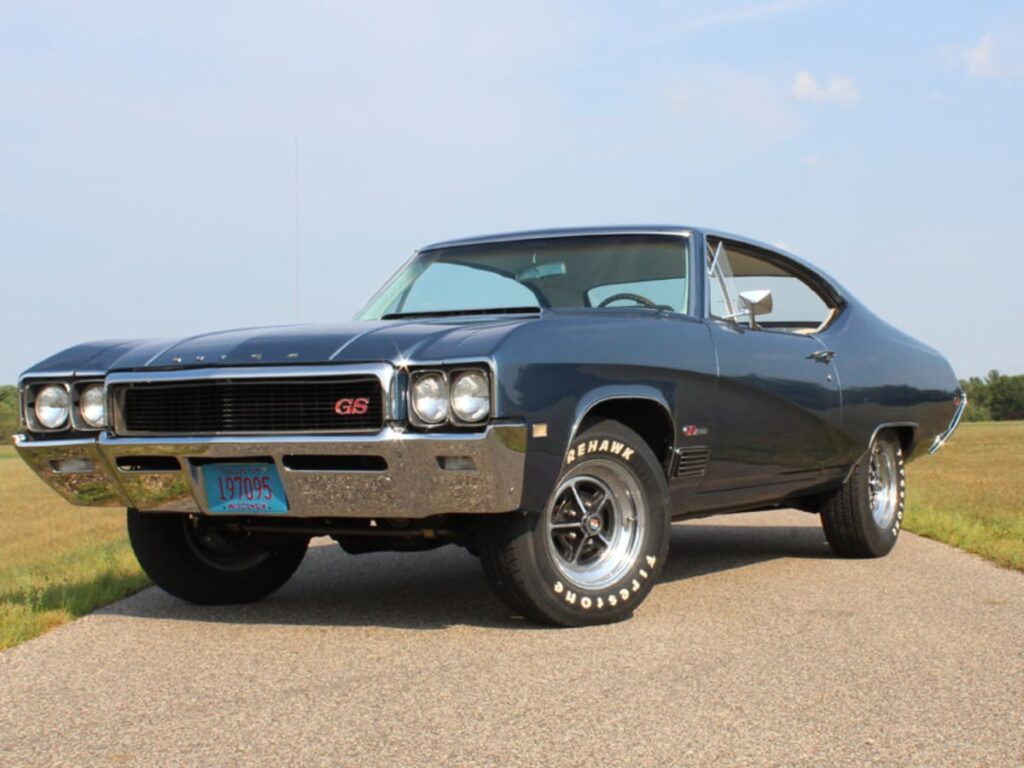
One of the most notable features of the GS 400 Stage 1 convertible is its stunning triple-black color combination—black top, black interior, and black paint. This monochromatic scheme contributes to the car’s aggressive and sleek appearance. It’s worth mentioning that the GS 400 Stage 1 convertible is a rare find, as Buick produced only a limited number of them.
The Stage 1 Name and its Significance
The naming of the Stage 1 option holds significance within the context of the space race during the late 1960s. Buick aimed to capture the imagination of car enthusiasts by associating the power of its vehicle with the Saturn V rocket stages used to propel the Apollo spacecraft to the moon. In an era when reaching the moon required strapping oneself onto a giant rocket, the Stage 1 name evoked a sense of immense power and performance.
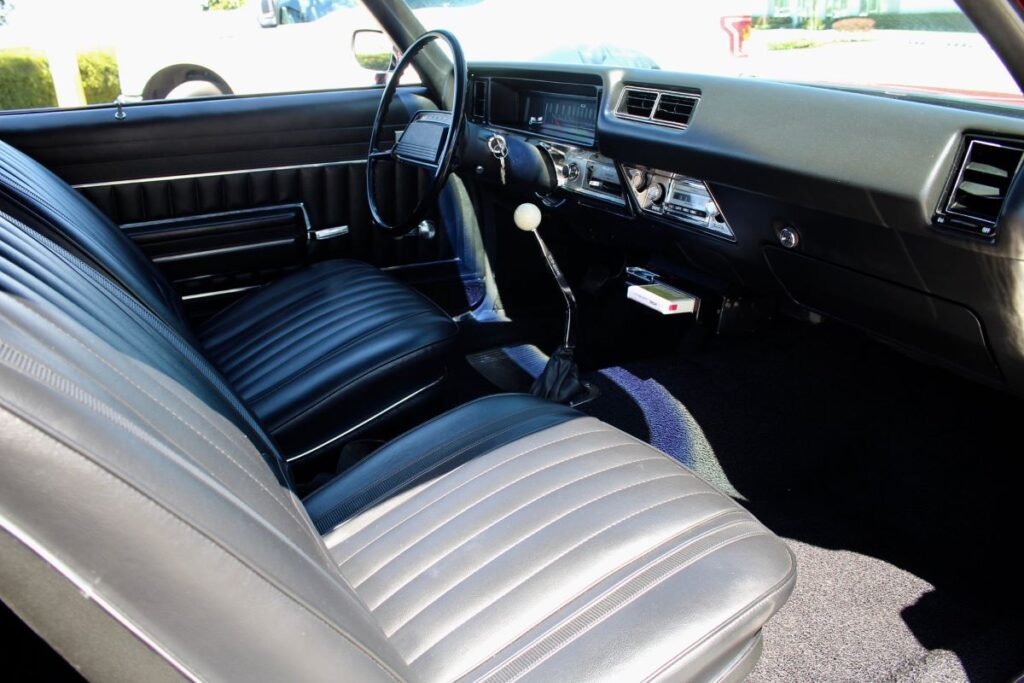
The Buick GS 400 Stage 1 showcased a blend of muscle car characteristics and luxury features. On the muscle car side, it boasted a rally steering wheel, a four-speed manual transmission, a console-mounted tachometer, and a “shorty” console for storage. On the luxury side, the car offered power windows, an AM radio with an 8-track player, and a power convertible top. Buick successfully managed to cater to both performance enthusiasts and those seeking a touch of luxury.
The GS X and Buick’s Evolution
In 1970, Buick introduced the GS X as a more radical version of the GS 400 Stage 1. The GS X took design cues from experimental aircraft, further pushing the boundaries of performance and style. These cars aimed to make drivers feel like fighter pilots, capturing the excitement and speed associated with aviation and the space program.
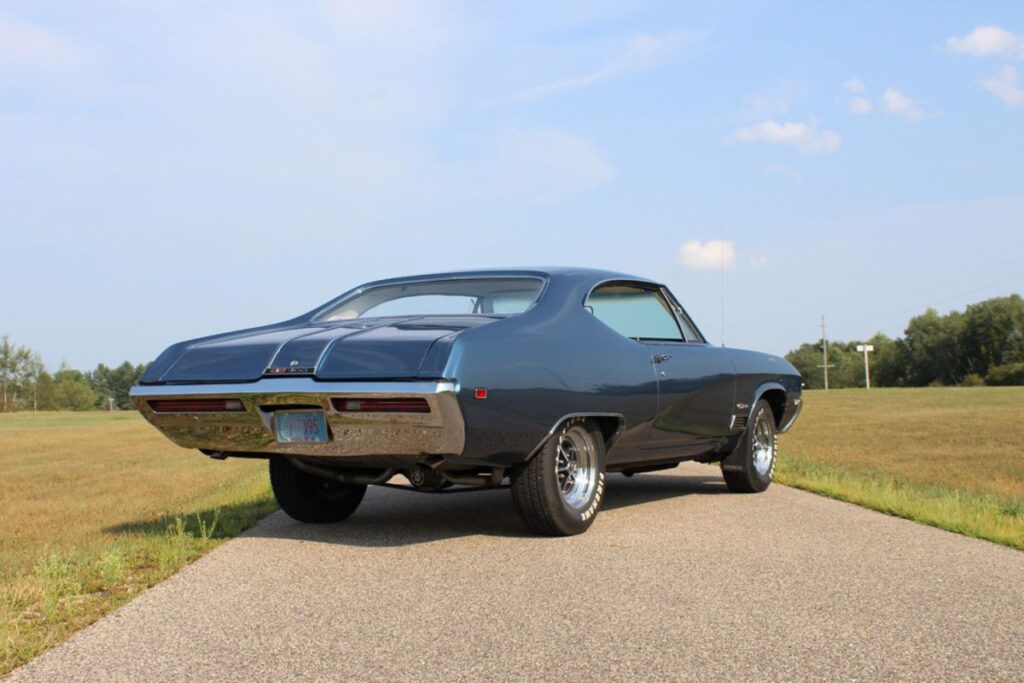
Buick continued to evolve its high-performance offerings, with the GS 400 Stage 1 serving as an important milestone in the brand’s history. The demand for powerful cars with sophisticated designs led Buick to develop vehicles that appealed to both performance enthusiasts and buyers seeking a touch of luxury.
Driving Experience and Performance
The Buick GS 400 Stage 1 delivered an exhilarating driving experience. Thanks to its performance-tuned suspension, larger sway bars, disc brakes, and specially tuned shock absorbers, the car provided impressive handling and cornering capabilities. The fully boxed frame and box lower rear control arms added to the car’s stability and performance-oriented design.
Whether launching from a standstill or cruising on the open road, the Buick GS 400 Stage 1 never failed to impress with its raw power and exhilarating performance. The combination of the potent Stage 1 engine, responsive transmission, and performance-enhancing features resulted in a thrilling driving experience.
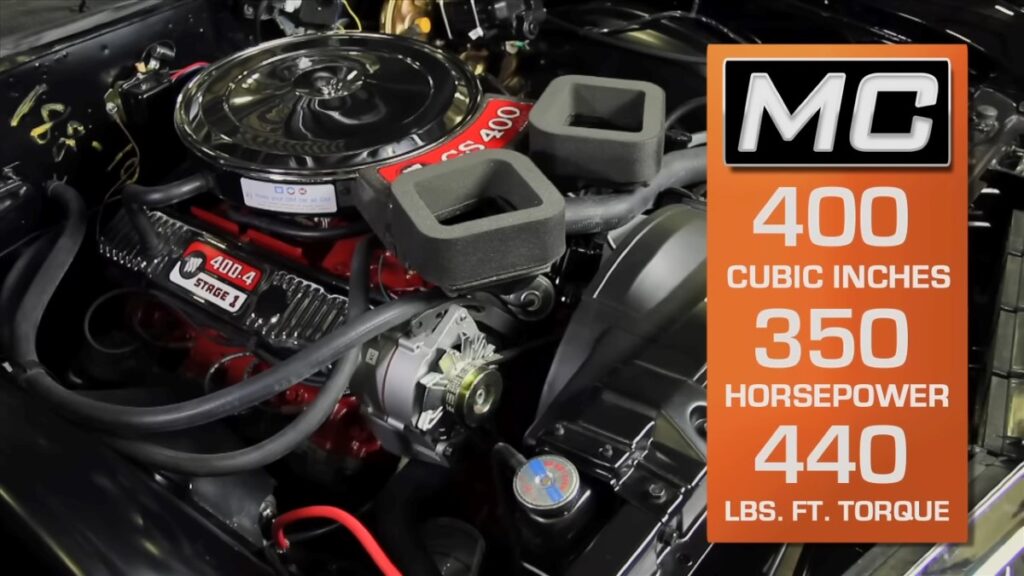
The acceleration of the GS 400 Stage 1 was awe-inspiring. Stepping on the gas pedal unleashed a surge of power that pinned you to the seat. The V8 engine roared to life, its deep rumble echoing through the exhaust. With each gear shift, the car propelled forward with authority, delivering an adrenaline rush that left drivers grinning from ear to ear.
Despite its high-performance nature, the GS 400 Stage 1 remained a comfortable and enjoyable car to drive. The interior boasted plush seating and a well-designed cockpit, allowing drivers to settle in and enjoy the ride. The power convertible top added an extra touch of excitement, allowing you to feel the wind in your hair as you cruised down the open road.
Legacy and Rarity
The 1969 Buick GS 400 Stage 1 convertible holds a special place in automotive history. Its unique blend of power, sophistication, and rarity makes it a highly sought-after classic car today. Only a limited number of these cars were produced, making them a true gem for collectors and enthusiasts.
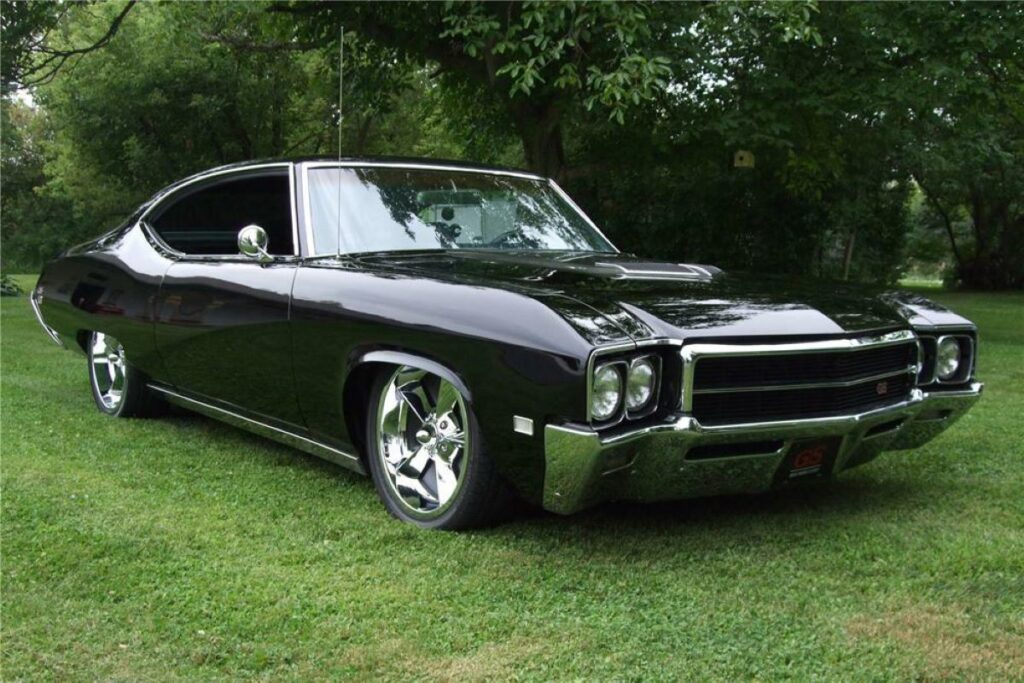
Owning a 1969 Buick GS 400 Stage 1 convertible is like owning a piece of automotive history—a symbol of Buick’s determination to cater to a broader market while still maintaining its reputation for luxury and refinement. The car represents a significant milestone in Buick’s evolution as it ventured into the realm of high-performance vehicles.
Conclusion
The 1969 Buick GS 400 Stage 1 convertible is a remarkable testament to Buick’s ability to create a powerful and elegant car that appealed to both the youth market and more mature buyers. With its aggressive yet understated design, impressive performance, and luxurious features, it remains an icon of American muscle cars.
This rare and captivating vehicle embodies the spirit of a bygone era, where automakers embraced the challenge of capturing the attention of performance-seeking customers. The Buick GS 400 Stage 1 convertible stands as a shining example of Buick’s ingenuity and commitment to delivering a thrilling driving experience without compromising on comfort and refinement.

